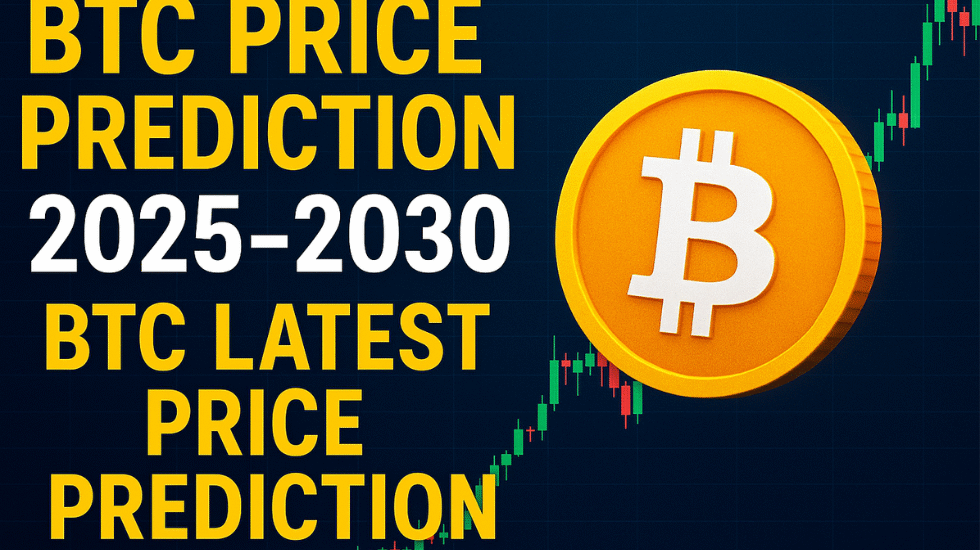What is Bitcoin (BTC)?
Bitcoin (BTC), the pioneering decentralized cryptocurrency, was initially conceptualized in a groundbreaking 2008 whitepaper authored by an anonymous individual or group known as Satoshi Nakamoto. This revolutionary digital currency officially launched in January 2009, ushering in a new era of finance. Functioning as a peer-to-peer (P2P) online currency, all Bitcoin transactions occur directly between network participants, fundamentally eliminating the need for any central financial institution or intermediary. As per Satoshi Nakamoto’s original vision, Bitcoin was created to facilitate “online payments to be sent directly from one party to another without going through a financial institution.” While concepts for similar decentralized electronic currency systems existed prior to its inception, Bitcoin holds the significant distinction of being the first-ever cryptocurrency to achieve actual real-world use.
Who are the founders of Bitcoin (BTC)?
Bitcoin’s enigmatic inventor is famously known only by the pseudonym, Satoshi Nakamoto. As of 2025, the true identity of the individual or organization behind this alias remains one of the most enduring mysteries in cryptocurrency.
On October 31, 2008, Satoshi Nakamoto unveiled the groundbreaking Bitcoin whitepaper, meticulously detailing the implementation of a peer-to-peer digital currency. This seminal document proposed a decentralized ledger of transactions, organized into batches called “blocks” and secured by advanced cryptographic algorithms – a revolutionary system that would later be recognized globally as blockchain technology.
Just two months later, on January 3, 2009, Nakamoto mined the genesis block on the Bitcoin network, officially launching the world’s first cryptocurrency. Initially, Bitcoin price was $0, and early BTC was predominantly acquired through Bitcoin mining, requiring only moderately powerful personal computers and specialized software. The first well-documented Bitcoin commercial transaction occurred on May 22, 2010, when programmer Laszlo Hanyecz famously exchanged 10,000 Bitcoins for two pizzas. This monumental event is now celebrated annually as “Bitcoin Pizza Day.” In July 2010, Bitcoin began its initial public trading, with its price ranging from $0.0008 to $0.08.
While Satoshi Nakamoto was the original inventor of Bitcoin and author of its initial implementation, they eventually transferred control of the network alert key and the code repository to Gavin Andresen, who subsequently became a lead developer at the Bitcoin Foundation. Over the years, a vast global community has significantly contributed to enhancing the cryptocurrency’s software, actively patching vulnerabilities and integrating innovative new features. The Bitcoin source code repository on GitHub currently lists over 750 contributors, including prominent figures such as Wladimir J. van der Laan, Marco Falke, Pieter Wuille, Gavin Andresen, and Jonas Schnelli.
Bitcoin (BTC) live price
| # | Name | Price | Changes 24h | Market CAP | Volume | Supply |
|---|
Bitcoin’s Future: Charting BTC’s Trajectory from 2025 to 2030
As we navigate through mid-2025, Bitcoin (BTC) firmly retains its position as the undisputed king of cryptocurrencies, widely acknowledged as “digital gold.” The period stretching from 2025 to 2030 is set to be a transformative era for BTC, characterized by its continued maturation, deeper integration into traditional finance, and a relentless push towards wider global adoption. While predicting precise price points remains speculative in the volatile crypto market, understanding the underlying forces at play offers valuable insights into Bitcoin’s future.
Key Driving Factors Shaping Bitcoin’s Future (2025-2030)
Several interconnected factors will significantly influence Bitcoin’s trajectory in the latter half of the 2020s:
- The Impact of Halving Events: The Bitcoin halving in April 2024 has already reduced the supply of new BTC entering the market. Historically, these events have been followed by periods of significant Bitcoin price appreciation due to increased scarcity. Looking ahead, the next Bitcoin halving is anticipated around 2028. This built-in deflationary mechanism reinforces Bitcoin’s scarcity narrative, potentially making it an even more attractive store of value as its supply diminishes against growing demand.
- Deepening Institutional Adoption: The approval of Spot Bitcoin ETFs in the U.S. in early 2024 marked a watershed moment, opening floodgates for easier institutional investment. From 2025 to 2030, expect to see:
- Increased Corporate Treasury Holdings: More public and private companies could allocate a portion of their reserves to BTC as a hedge against inflation or a strategic asset.
- Expanded Financial Product Offerings: Traditional banks, asset managers, and wealth advisors will likely offer more direct Bitcoin exposure and services to their clients.
- Pension Funds and Endowments: Growing comfort and regulatory clarity could lead to more significant allocations from large institutional investors.
- Evolving Regulatory Landscape: Regulatory clarity will be a double-edged sword. While clear rules can foster confidence and encourage broader adoption, overly restrictive regulations could impede growth. From 2025 to 2030, we anticipate:
- Global Harmonization Efforts: Major economies might work towards more unified approaches to cryptocurrency regulation, potentially reducing market fragmentation.
- Focus on Consumer Protection and Market Integrity: Regulators will likely prioritize safeguarding investors and preventing illicit activities, which could benefit legitimate Bitcoin usage.
- Taxation Frameworks: More sophisticated and standardized taxation policies for Bitcoin and other digital assets will likely emerge.
- Technological Advancements and Scaling Solutions: The core Bitcoin blockchain is designed for security and decentralization, not speed. However, Layer 2 solutions are continuously evolving:
- Lightning Network: The Lightning Network is expected to see significantly increased adoption for everyday Bitcoin transactions, enabling instant, low-cost payments. This positions BTC as a more viable medium of exchange globally.
- Ordinals and Runes (and other Layer 2 protocols): While controversial for their impact on transaction fees, protocols like Ordinals and Runes have demonstrated new use cases for the Bitcoin blockchain beyond just value transfer (e.g., NFTs, fungible tokens). Their long-term impact on network activity and fee dynamics will continue to be monitored.
- Sidechains (e.g., Liquid): Further development and integration of Bitcoin sidechains will enable more complex functionalities and privacy-enhanced transactions without burdening the main chain.
- Macroeconomic Environment and Geopolitical Influence:Bitcoin’s performance is increasingly intertwined with global economic conditions:
- Inflation Hedge Narrative: In periods of sustained inflation or monetary easing, Bitcoin’s limited supply strengthens its appeal as an inflation hedge and a store of value.
- Geopolitical Instability: Conflicts or economic uncertainties can drive demand for decentralized, censorship-resistant assets like BTC.
- Central Bank Digital Currencies (CBDCs): The rollout of CBDCs in various nations could paradoxically highlight the unique value proposition of a decentralized asset like Bitcoin by offering a stark contrast.
Bitcoin (BTC) Price Prediction 2025-2030
Three potential scenarios based on historical patterns and market dynamics
Bullish Catalysts
- Institutional adoption (ETFs, corporations)
- Global monetary inflation hedge
- Lightning Network scaling success
- Store-of-value narrative strengthens
- Halving cycle effects
Base Case Factors
- Moderate institutional adoption
- Continued developer activity
- Steady hash rate growth
- Gradual regulatory clarity
- Historical halving patterns
Bearish Risks
- Regulatory crackdowns
- Black swan events
- Quantum computing threats
- CBDC competition
- Macroeconomic recession
Bitcoin’s Potential Role and Price Trajectory (2025-2030)
- Reinforced “Digital Gold” Status: Bitcoin is likely to further cement its position as the premier digital gold, attracting capital from investors seeking an alternative or complement to traditional safe-haven assets.
- Growing Medium of Exchange (via Lightning): While not replacing fiat currencies, Bitcoin’s utility for faster, cheaper international remittances and micro-payments, especially in emerging economies, will grow substantially thanks to the Lightning Network.
- Price Trajectory (Highly Speculative): Analysts’ price predictions for Bitcoin in this timeframe vary widely, ranging from six-figure valuations (e.g., $100,000 – $500,000+) to even higher figures. These projections are often based on adoption rates, institutional inflows, and the severity of supply shocks from halvings. However, investors must remember that volatility will remain a characteristic of the Bitcoin market. Factors like interest rate hikes, unexpected regulatory crackdowns, or major security breaches in the broader crypto ecosystem could cause significant downturns.
Challenges and Risks Ahead
Despite its strong outlook, Bitcoin’s future is not without hurdles:
- Competition from Altcoins: Other blockchains and altcoins continually innovate, offering different functionalities and potentially drawing developer and user attention.
- Scalability Debates: While Layer 2s help, the fundamental scalability of the base layer for truly global, high-frequency transactions remains a long-term discussion.
- Energy Consumption Concerns: The environmental impact of Bitcoin mining continues to be a point of criticism, potentially leading to regulatory pressure or disincentives in some regions. Continued innovation in sustainable mining practices is crucial.
- Quantum Computing (Long-term Threat): A theoretical, distant threat, quantum computing could potentially compromise current cryptographic algorithms, though Bitcoin developers are aware of this and working on post-quantum cryptography solutions.
- Regulatory Overreach: Governments might attempt to exert excessive control over decentralized assets, potentially impacting liquidity and accessibility.
Conclusion: Bitcoin’s Enduring Presence
From 2025 to 2030, Bitcoin (BTC) is expected to solidify its role as a fundamental pillar of the global financial system. Its inherent scarcity, robust security, and growing network effect, amplified by ongoing technological advancements and increasing institutional acceptance, paint a picture of continued resilience and potential appreciation. While volatility will persist and new challenges will undoubtedly emerge, Bitcoin’s foundational principles of decentralization and censorship resistance position it as a powerful, enduring force in shaping the future of finance and technology.

















































Great summary of Bitcoin’s origins. I’d be curious to see a deeper dive into how BTC’s fundamentals could affect its price trajectory through 2030—especially with upcoming halving events.
It’s fascinating to think how Bitcoin really pushed the boundaries of traditional finance by removing intermediaries from the equation. The whole idea of direct peer-to-peer transactions without a central authority still feels revolutionary even years later.